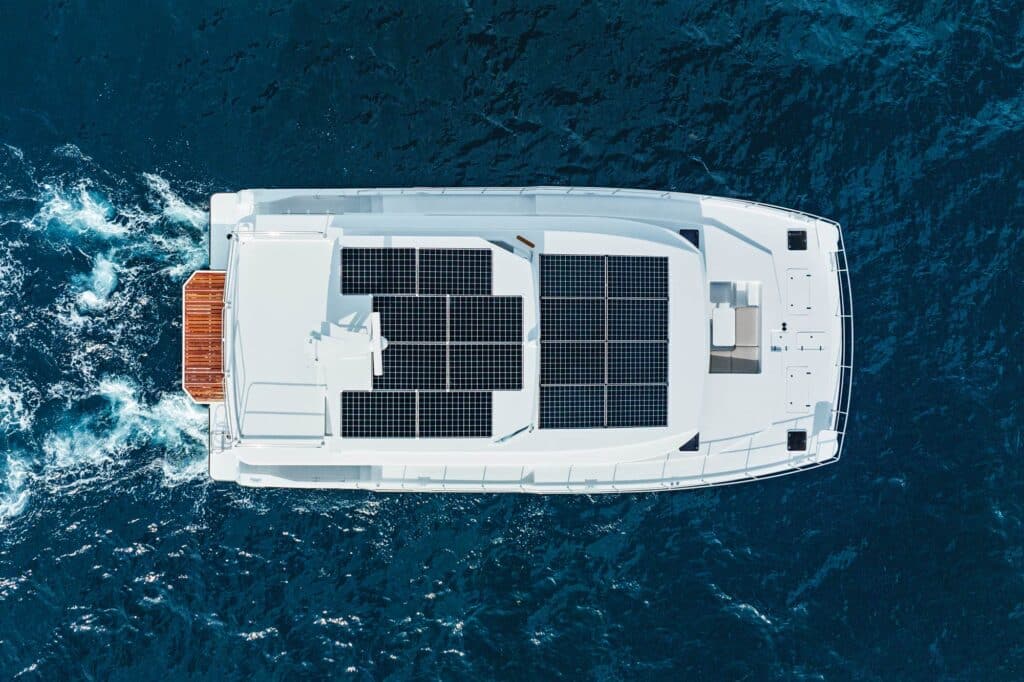
Dave Jirikovic of HMY Yachts was on a quest. The sales broker was looking for the meanest, nastiest patch of Gulf Stream he could find to show a potential client what the Two Oceans 555 power cat could handle.
“There,” he said, pointing ahead. “A series of solid 4-footers.” The Gulf Stream was roiled from several days of 20-plus-knot northern winds running against the northbound current.
And just as he had intended to show us, the broad-shouldered power cat didn’t even notice. He even dropped the single-lever throttles back to idle and left the 25-foot-wide Two Oceans 555 beam-on to another set of square-edged seas. The 55-footer brushed that off too. Jirikovic tried quartering into the seas—never a happy angle for catamarans—and the yacht drowsed through them.
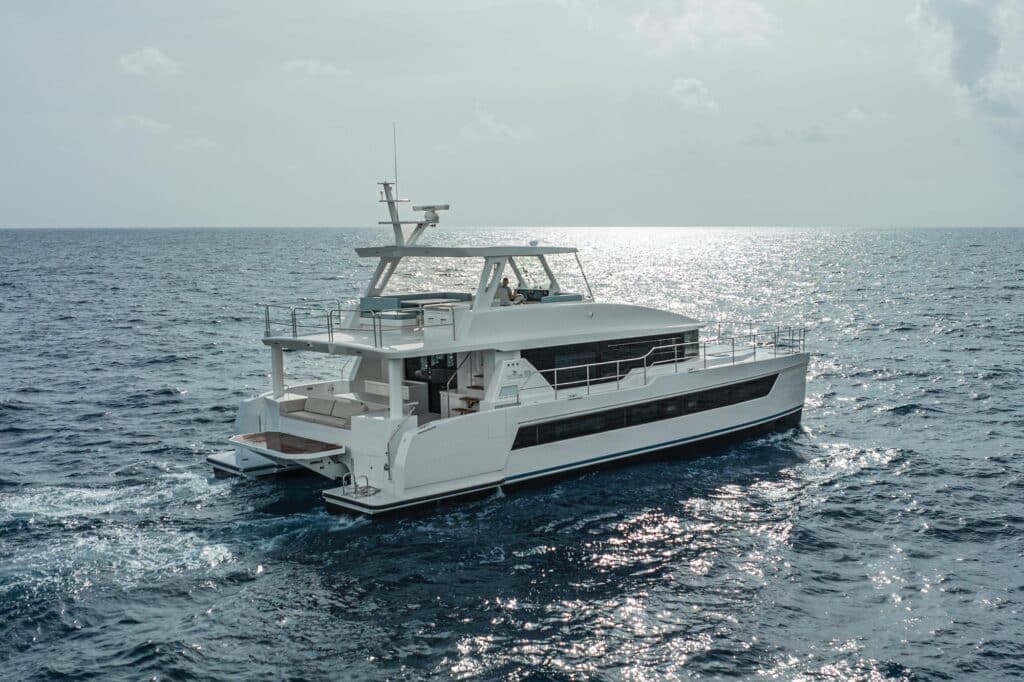
Stability was among many characteristics that left me impressed with the Two Oceans 555, the company’s first offering in the United States. The builder was founded in 1989 and constructs its boats in Cape Town, South Africa, with power and sail models from 23 to 160 feet length overall. Two Oceans also builds offshore rescue craft, which explains some of the other characteristics I saw after taking a turn at the helm of the Two Oceans 555.
For instance, I was startled to learn that this power cat gets about 1 nautical mile per gallon at 10 knots. With 750 gallons of fuel, that’s a lot farther than most yachtsmen will ever want to run in a single hop.
This cat also has speed—topping out at more than 27 knots—with twin 550 hp Cummins QSB6.7L diesels. The vessel’s performance and seaworthiness are a tribute to the twin slippery hulls designed by Du Toit Yacht Design of South Africa. Using tunnels tightly fitted to the props for maximum power, and with low-drag sacrificial keels, the 555 has just a 3-foot-6-inch draft.
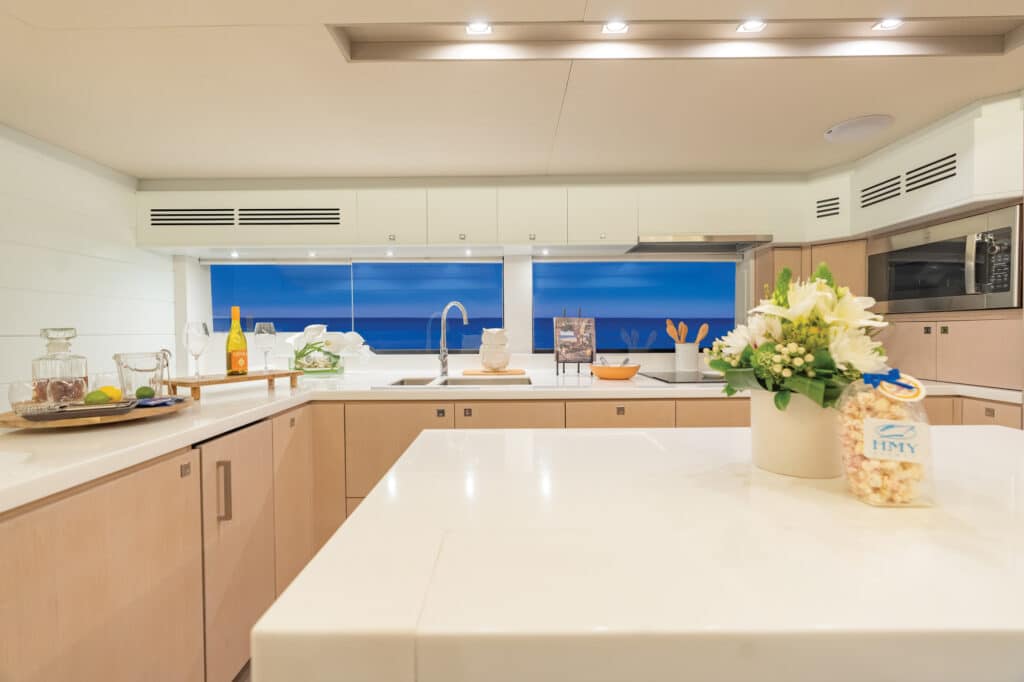
Construction is solid with a vinylester barrier coat underwater and PVC foam core, all vacuum-bagged for strength and reinforced with carbon fiber in high-load areas.
Effort has clearly been spent on soundproofing; my decibel meter barely nudged 82 dB(A) at 26.5 knots in the salon. Thanks to the boat’s underwater side-mounted exhausts, the bridge sound was even quieter: 79 decibels at 23 knots.
The thing I liked most about the Two Oceans 555 is that it is essentially a blank canvas. This particular boat had a layout I liked: an on-deck master stateroom separated from the salon by sliding doors. The master has 180 degrees of 27-inch-high windows for a panoramic view from the walk-around island berth. The en suite head is in the port hull with twin sinks, a 3-by-4-foot shower stall and a tilt-up vanity.
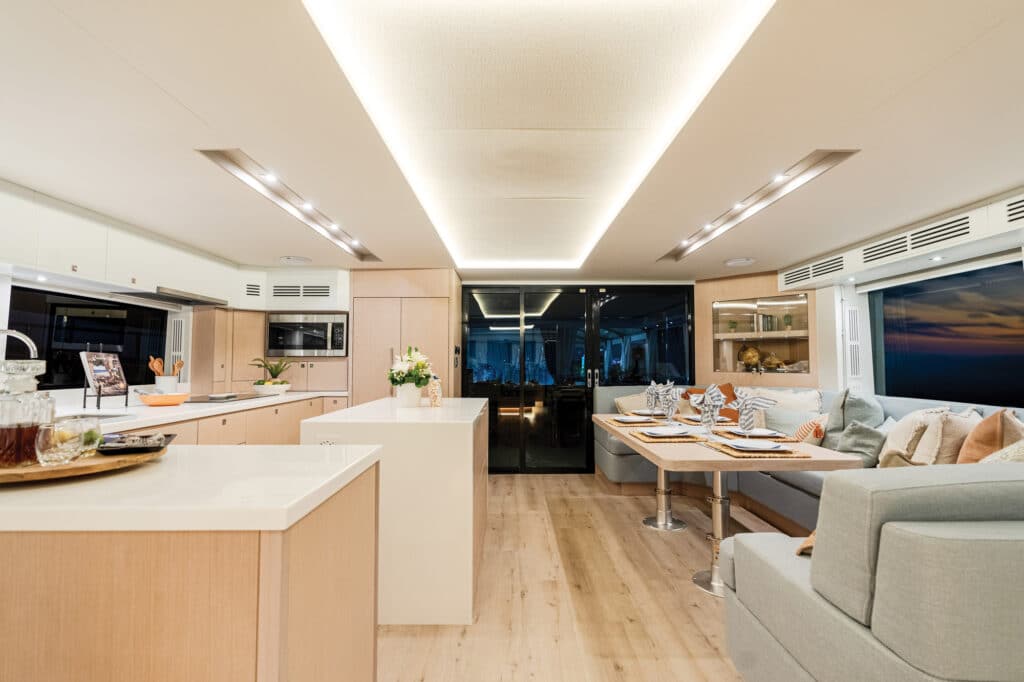
Guest staterooms included an athwartships space forward in the starboard hull with a larger-than-queen berth, and another stateroom aft with a queen berth. The opposite hull had a third guest stateroom with twin berths.
This yacht’s salon had a dinette to port opposite a galley large enough to accommodate several chefs. All the usual amenities—from US manufacturers for easy service—included a stand-up two-door fridge with a drawer, a microwave, a five-burner cooktop, an ice maker, a trash compactor and a dishwasher. What was more interesting was the size of the L-shaped Corian countertop: The L was a few inches shy of 8 feet, while the fore-and-aft counter was more than 11 feet long.
The salon opens up to the cockpit, which, on this 555, had a settee with a dining table. The back is double-sided so people could sit facing aft, either to watch the launching or retrieval of a tender with the hydraulic platform or just to enjoy a sunset. There’s also a U-shaped recessed dinette with wraparound seating on the foredeck.
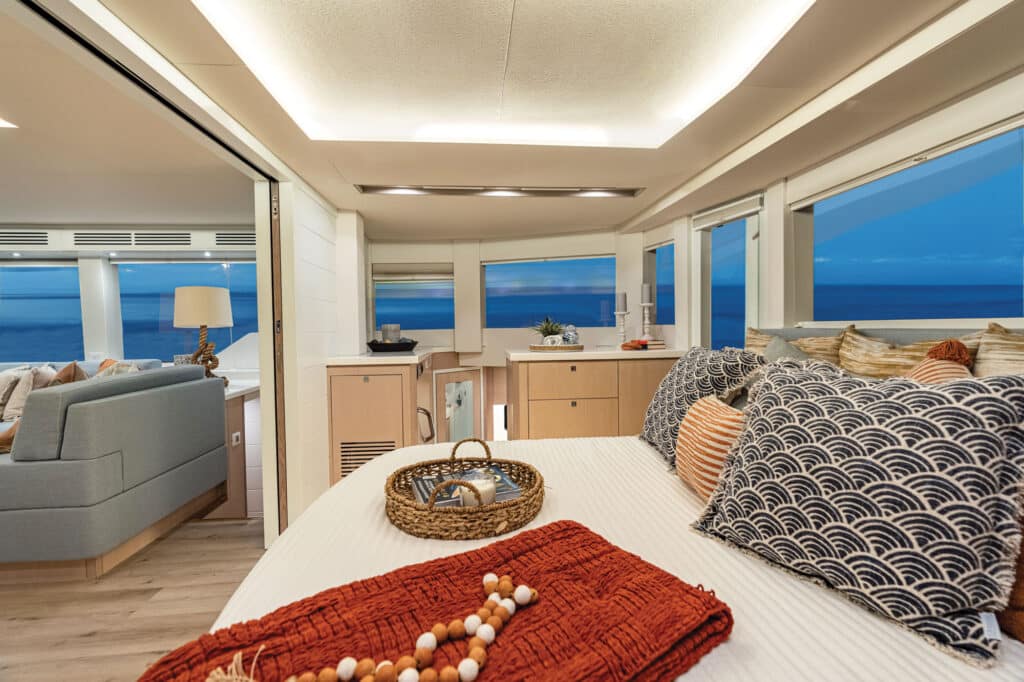
That leaves the flybridge, whose open aft deck was 9 feet by 28 feet for sun lounges, chaises or personal watercraft to be launched via the optional crane. A wraparound dinette to port faced a grill, a fridge, an ice maker and a sink.
The helm is forward, abaft a full-height windscreen. There’s a double-wide Stidd seat, and either two or three Garmin multifunction displays. Future boats are likely to have the engine monitors and switches in an overhead, aircraft-style panel on the hardtop, but there was room for the skipper to make good use of the standard Side-Power bow thruster (a stern thruster is optional).
This power cat had the optional Off-Grid package, using twin 9 kW Integrel Solutions generators coupled to the prop shafts with flex power takeoffs. Combined with the solar panels forward of the flybridge helm, this arrangement feeds a bank of Victron Energy lithium-phosphate batteries totaling 26,000 watts, providing more than 19 hours of silent running time for all air-conditioning, ship and galley needs.
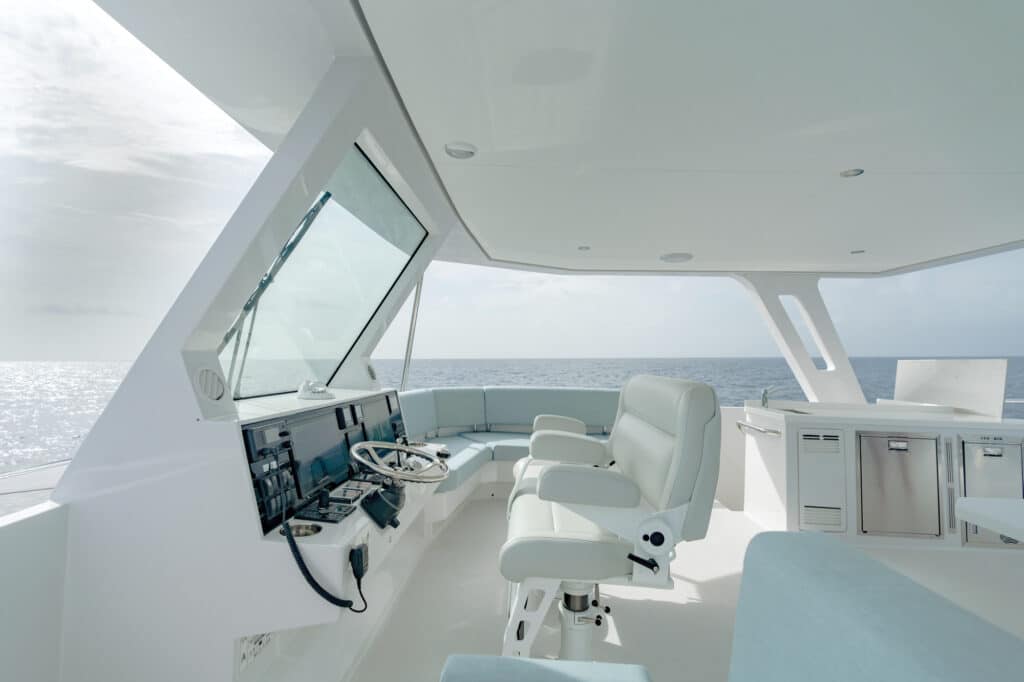
The Two Oceans 555 power catamaran has the interior and exterior real estate of a monohull nearly double its size. It offers a smooth ride in rough water, has accommodations for the largest of cruising families, and uses solar power to cruise anywhere a yachtsman desires. All of this, combined with the ability to heavily personalize the yacht, makes the Two Oceans 555 a strong offering in the power-cat marketplace.
Wealth of Experience
Du Toit Yacht Design may not yet be a household name in the United States, but it is the leading catamaran design firm in South Africa, with several sizes of Two Oceans power cats and Balance sailing catamarans, and more than 120 production and custom yacht designs.
Power Play
Victron Energy is a Dutch producer of electrical equipment for marine and industrial needs, energy storage and solar energy access. Each Victron lithium-phosphate battery has its own battery-management system.
The Battery Basics
The builder says that when it comes to recharging, the yacht’s lithium-phosphate batteries can ramp back up to 85 percent power in just 60 minutes when the main engines are running.
Efficient Engines
The Cummins QSB6.7L is an in-line six-cylinder, 408-cubic-inch, turbocharged, after-cooled diesel noted for its 80 percent noise reduction compared with similar engines, because of its common-rail fuel system. The single-loop, low-temperature after-cooling eliminates the need for keel coolers, and it reduces emissions.
Take the next step: hmy.com









